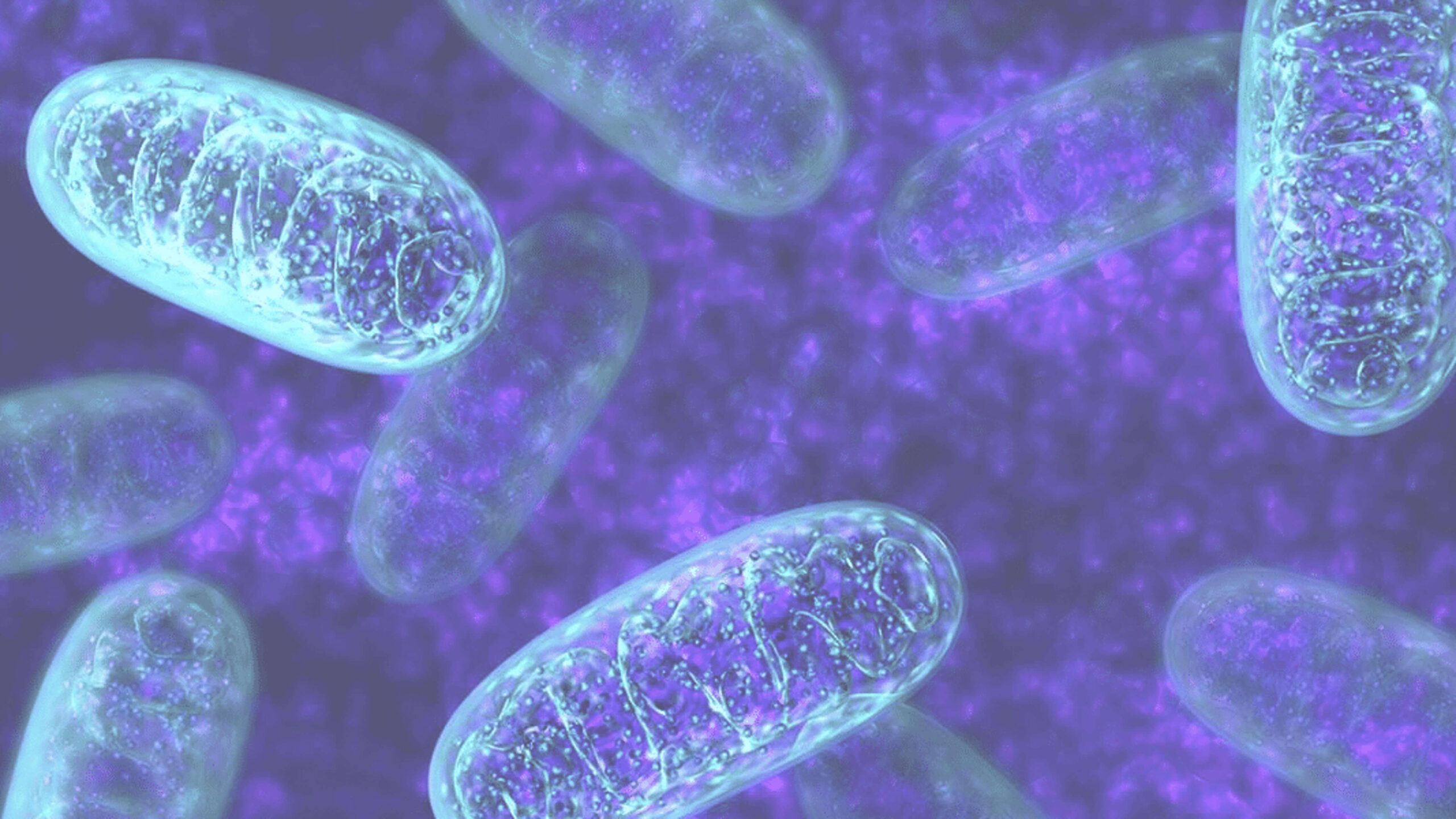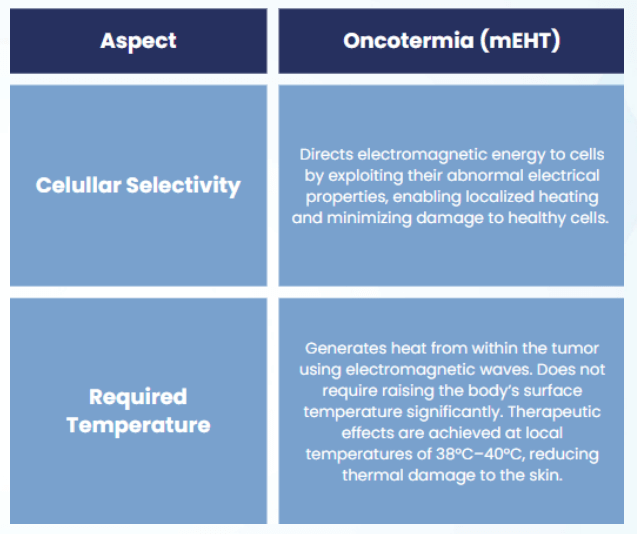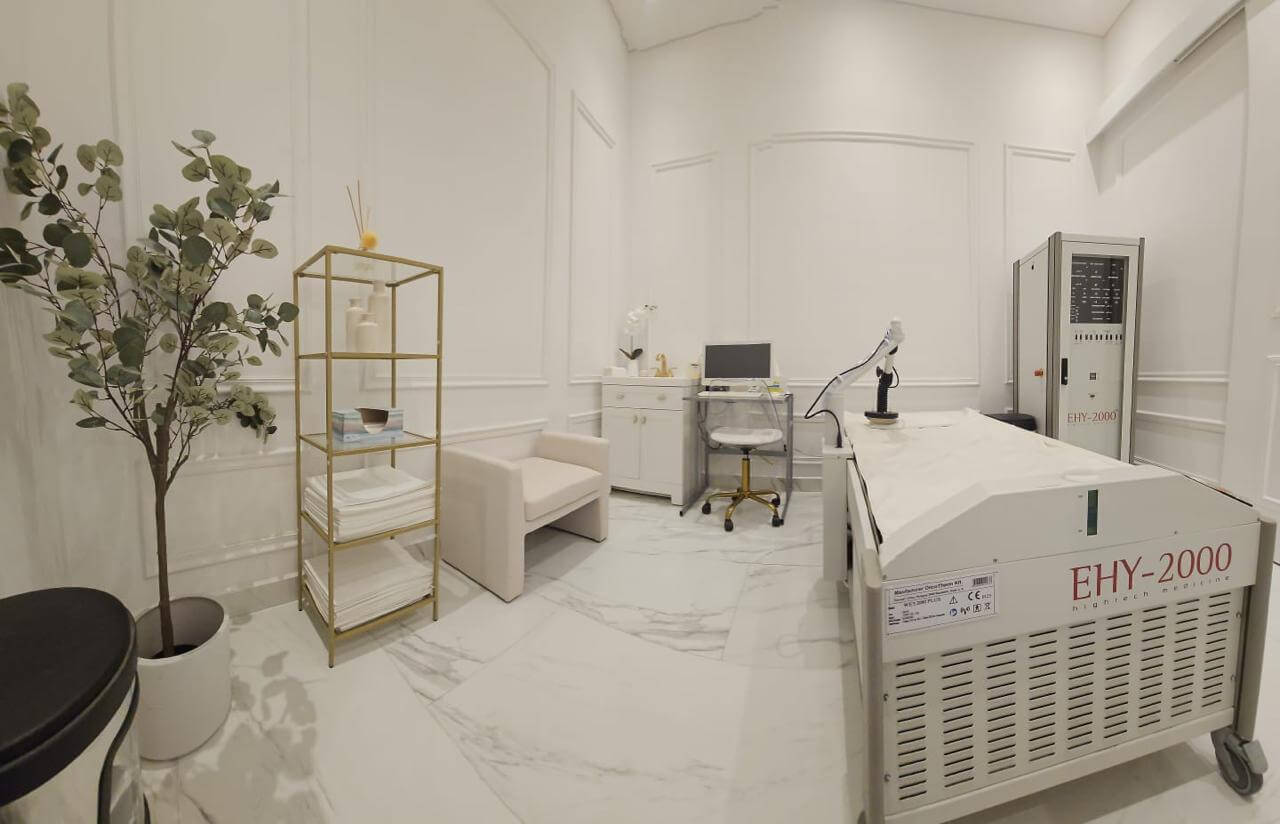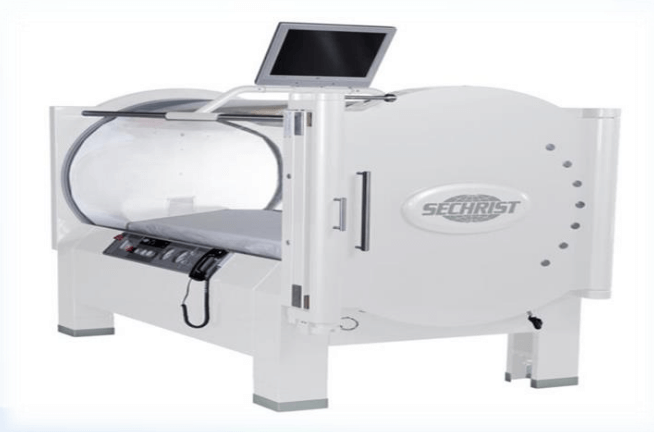comprehensive cancer treatments
We believe that the most effective medicine is the one that honors each person’s unique biological individuality
Our therapeutic programs are precisely designed to respond to the specific needs of each individual, considering their clinical manifestations (symptoms), lifestyle, medical history, epigenetic information, and personal health goals.
Through a highly personalized approach, we integrate cutting-edge medical technology such as biophotonic therapies—photobiomodulation (PBM) and photodynamic therapy (PDT)—into a comprehensive health program. At PBM Photomedicine, our model is multidisciplinary and allows for synergy between conventional cancer treatments and our noninvasive and painless outpatient therapies, along with other innovative approaches such as personalized immunotherapy, targeted therapies, oncothermia, hyperbaric medicine, intravenous cellular nutrition, ozone therapy (O₃), and connexosome therapies.
The goal is clear: to effectively combat cancer, prevent metastasis, and promote the comprehensive well-being of each patient.

At PBM, health programs are not generic: they are personalized, precise, and profoundly human.
Cancer: a complex disease that demands a personalized approach.
Cancer encompasses more than 200 distinct types, each with specific molecular,
histological, clinical, and therapeutic characteristics.
It is defined by the abnormal and uncontrolled growth of cells that can invade nearby
tissues and spread to other parts of the body through the bloodstream or lymphatic
system, in a process known as metastasis.
This behavior results from the progressive accumulation of genetic and epigenetic
alterations that affect genes involved in cell cycle regulation, apoptosis (programmed cell
death), DNA repair, angiogenesis (formation of new blood vessels), and immune system
evasion.
Due to its biological complexity and heterogeneity, modern cancer management has
evolved toward more individualized approaches, known as precision medicine. This strategy
uses genetic, molecular, and environmental information from both the patient and the
tumor to select targeted therapies, immunotherapies, or personalized combinations that
increase treatment effectiveness and reduce side effects.
Our Comprehensive Support Program to Fight Cancer
At PBM Photomedicine – Advanced Medical Center, we offer a stimulatory and regenerative
approach designed to strengthen the immune system, activate metabolic functions, and
work at the cellular level by acting directly on the organism — cells, tissues, organs, and
organ systems. In particular, it targets mitochondrial functions that enable energy
production (ATP), metabolism regulation, cellular signaling, and play roles in apoptosis and
calcium transport, helping to restore cellular and metabolic balance to fight cancer.
This treatment is one of a kind, as it requires advanced optical programming to determine
the precise energy and light levels needed for each patient in order to achieve the intended
outcome.
The technology serves as a powerful ally that can, on its own, reduce benign or malignant
tumors and enhance the body’s natural immune response. PBM and PDT are highly
beneficial and can be applied at all stages of cancer care — before, during, and even after
chemotherapy, radiotherapy, or surgery. This technology (PBM/PDT), even in the absence of
conventional treatments, has shown highly favorable results.
Our approach is based on non-invasive, painless, and safe therapies designed to improve
clinical prognosis and enhance the patient’s quality of life.
Benefits of Photobiomodulation (PBM) in Cancer
- Improves prognosis and quality of life by reducing symptoms, accelerating recovery, and strengthening the body.
- Stimulates mitochondrial function, increasing the production of ATP (Adenosine Triphosphate), the essential source of cellular energy.
- Enhances tissue oxygenation, improving immune response and reducing the environment favorable to tumor cells.
- Stimulates the bone marrow, promoting the production of stem cells and key components of the immune system.
- Induces apoptosis in malignant cells without harming healthy tissue, contributing to a biologically hostile environment for cancer.
- Strengthens immunity and reduces the risk of opportunistic infections.
- Speeds up post-surgical recovery by reducing inflammation, pain, and healing time.
- Increases the number and functionality of immunocompetent cells.
- Significantly reduces pain associated with cancer or conventional treatments.
- Eases chemotherapy side effects such as fatigue, mucositis, peripheral neuropathy, and nausea.
- Outpatient procedure — safe and painless — that does not require hospitalization or cause significant adverse effects.
The human body needs energy, oxygen, and an efficient immune response to fight chronic diseases like cancer. Photobiomodulation aims to provide precisely these tools, promoting a state of physical, mental, and emotional balance and well-being.
A Therapy That Supports Every Stage of the Cancer Process
Photobiomodulation (PBM) can be safely and effectively integrated before, during, or after
conventional treatments such as chemotherapy, radiotherapy, and surgery. Its adaptability
allows it to provide support at every stage of cancer, from early phases to more advanced or
metastatic conditions.
Types of Cancer Where PBM Can Be Applied:
- Prostate Cancer
- Prostate Cancer
- Breast Cancer
- Lung Cancer
- Leukemia (Blood Cancer)
- Melanoma (Skin Cancer)
- Ovarian Cancer
- Colon Cancer
- Cervical Cancer
- Bladder Cancer
- Metastatic Disease
- Thyroid Cancer
- Kidney Cancer
- Brain Cancer
- Bone Cancer
- Testicular Cancer
- Pancreatic Cancer
- Liver Cancer
- Stomach Cancer
- Throat Cancer
- Hodgkin’s Lymphoma
- And any other type of cancer
At PBM Photomedicine, we recognize that every case is unique. That’s why we adapt our
photobiomodulation protocols based on the type of cancer, its location, clinical stage, and
each patient’s specific needs.
Photobiomodulation: Cellular Energy for Recovery and Wellness
The human body is a complex network made up of trillions of cells, each with vital functions
such as energy production, tissue repair, and immune defense. When these cells work in
balance, they ensure homeostasis and optimal physiological functioning.
However, aging, oxidative stress, chronic diseases, environmental factors, and unhealthy
lifestyle habits can impair cellular function. This deterioration affects the body’s ability to
regenerate, leading to persistent inflammation, mitochondrial dysfunction, and a gradual
decline in health.
In response to this reality, an advanced medical technology known as photobiomodulation
(PBM) — also referred to as low-level laser therapy (LLLT) — has emerged as an innovative,
safe, and effective therapeutic tool to restore cellular balance and support recovery across a
wide range of conditions.s.
What is photobiomodulation?
Photobiomodulation is a biophotonic therapy based on the application of low- or highintensity laser or LED light that stimulates biological responses in tissues without causing thermal or structural damage.
This light, carefully calibrated in wavelength and dose, promotes cellular repair, modulation,
and regeneration.
Its main goal is to restore altered cellular function — enhancing vitality, tissue recovery, and
the immune response.
How Does Photobiomodulation Work?
PBM acts directly on the mitochondria, the organelles responsible for generating cellular
energy (ATP). When absorbed by intracellular chromophores — particularly cytochrome c
oxidase — the light stimulates the mitochondrial respiratory chain, increasing ATP
production.
This boost in energy enhances cellular function, reduces oxidative stress, and activates repair
and regeneration mechanisms. Additionally, PBM modulates inflammatory processes, improves microcirculation, and promotes angiogenesis, enhancing tissue oxygenation and
nourishment.
How Does It Interact with the Human Body?
Photobiomodulation works at the cellular and molecular levels, providing multiple therapeutic benefits:
- Increased ATP: more energy for cells to perform their vital functions
- Reduction of chronic inflammation
- Stimulation of tissue regeneration and wound healing
- Modulation of the immune system
- Improved blood and lymphatic circulation
- Reduced pain and fatigue
These effects make PBM a valuable complementary treatment for chronic, neurodegenerative, musculoskeletal, autoimmune, and oncological conditions, among others.
Is Photobiomodulation Safe?
Absolutely, yes. PBM is a non-invasive, painless, and safe therapy, widely supported by scientific evidence. It does not cause significant side effects or damage to healthy tissue when applied correctly.
At PBM Photomedicine – Advanced Medical Center, all treatments are performed by a multidisciplinary team of certified doctors and specialists who tailor therapeutic parameters according to each patient’s diagnosis and clinical evolution. This ensures the highest level of safety and effectiveness for every intervention.
Photodynamic Therapy (PDT): Selective Precision Against Tumor Cells
Photodynamic Therapy (PDT) is a minimally invasive therapeutic option that uses a highly selective photochemical approach to destroy tumor cells. This treatment is based on three key elements:
- Administration of a photosensitizer (a photoactive molecule that preferentially accumulates in malignant cells).
- Irradiation with a light source of a specific wavelength that activates the photosensitizer.
- Presence of molecular oxygen, essential for generating reactive oxygen species (ROS) that induce localized tumor cell apoptosis or necrosis.
- One of the main advantages of PDT is its ability to destroy only the tumor tissue in the illuminated area while preserving surrounding healthy tissue.
This allows for a high degree of precision with
minimal side effects, as it does not involve ionizing radiation or systemic chemotherapeutic
agents.
Clinical Applications of PDT:
- Precancerous lesions (epithelial dysplasias)
- Superficial cancers of the skin, bladder, cervix, esophagus, lungs, and oral cavity
- Tumors located in areas where preserving function or aesthetics is important
- Resistant or recurrent tumors in patients who cannot tolerate conventional treatments
Advantages of Photodynamic Therapy:
- High selectivity and local precision
- Outpatient procedure, painless, and with rapid recovery
- Compatible with chemotherapy, surgery, immunotherapy, or radiotherapy
- Repeatable without cumulative toxicity
- Stimulates a local antitumor immune response, helping control residual cancer cells
Oncothermia

(Oncological Nanothermia – mEHT): Selective Hyperthermia at the Cellular Level
Mechanisms of Action:Oncothermia, also known as Oncological Nanothermia or mEHT (modulated ElectroHyperThermia), is an advanced form of oncological hyperthermia that uses modulated
radiofrequency electromagnetic waves to selectively heat tumor cells at the subcellular level,
without affecting healthy tissue.
Action Mechanisms:
Physical
Electromagnetic energy is preferentially distributed in the tumor microenvironment,
taking advantage of its higher electrical conductivity and abnormal bioelectric characteristics.
Biological
The heat induced at the intracellular level causes:
- Direct thermal damage, including double strand DNA breaks
- Denaturation of proteins essential for cell survival
- Induction of tumor apoptosis without excessive inflammation
- Release of immune “alarm” signals that may activate the immune system against the tumor.
Therapeutic Effects of Oncothermia:
Acts in a highly focused manner on the tumor without heating the whole body Improves tumor oxygenation and intratumoral perfusion, enhancing the effectiveness of other treatments such as:
- Chemotherapy
- Radiotherapy
- Photobiomodulation (PBM)
Synergy with Photobiomodulation:High-Precision Therapeutic Integration
The combination of Oncothermia with Photobiomodulation (PBM) represents a synergistic therapeutic strategy with dual action:
PBM works both systemically and locally, enhancing mitochondrial function, immunomodulation, and cellular regeneration throughout the body.
Oncothermia acts exclusively on the tumor, increasing localized cellular damage and sensitizing tumor cells to other treatments.
Together, these therapies:
- Increase antitumor efficacy
- Reduce systemic side effects
- Promote apoptosis and immune modulation in the tumor microenvironment
At PBM Photomedicine – Advanced Medical Center, we combine science, technology, and a human-centered approach to offer integrative treatments that enhance therapeutic effectiveness and improve the well-being of oncology patients.

Clinical Applications of Oncothermia
Oncothermia is used as a complementary therapy in the treatment of various types of cancer,
with the aim of enhancing the effectiveness of conventional treatments and reducing their
side effects. Its main clinical applications include:
- Head and neck cancer
- Breast cancer
- Lung cancer
- Esophageal cancer
- Bladder cancer
- Ovarian cancer
- Rectal cancer
- Liver cancer
- Prostate cancer
- Melanoma
- Soft tissue sarcoma
Indications for Oncothermia
|
|
Advanced Solid Tumors |
|
|
Combined TherapyWhen combined with chemotherapy and radiotherapy, photobiomodulation helps |
|
|
Symptom Management and Palliative CareIt helps reduce pain and improve the patient’s overall quality of life. |
|
|
Postoperative TreatmentIt supports recovery and helps reduce the risk of tumor recurrence. |

Intravenous Cellular Nutrition Therapy
Restoring the Biological Terrain from Within
Intravenous Cellular Nutrition Therapy is an advanced biological intervention that directly
and effectively replenishes levels of essential vitamins, minerals, amino acids, trace elements, and other key nutrients. This approach enhances the bioavailability of micronutrients by bypassing the digestive tract, allowing for immediate cellular absorption.
By optimally nourishing the internal environment, this therapy strengthens the immune system, optimizes mitochondrial function, and promotes metabolic balance — enhancing the body’s ability to respond to chronic, degenerative, or immune-related diseases. It also creates a favorable biological foundation to complement treatments such as exosome therapy, photobiomodulation, and other regenerative therapies

High-Dose Multivitamins: Individualized Formulas to Rebalance the Body.
We use high-concentration, personalized formulas designed to:
Support mitochondrial cellular function
|
Stimulate natural repair and detoxification mechanisms
|
Reduce oxidative stress and systemic inflammation
|
Strengthen the immune system in a comprehensive way
|
The formulas may include nutrients such as:
| • Ascorbic acid (high-dose vitamin C) | • Pyridoxine (Vitamin B6) |
| • Magnesium, zinc, selenium, and chromium | • Glutathione, L-carnitine, coenzyme Q10, and other antioxidant or bioactive agents |
| • Vitamin C | • Hydroxocobalamin (Vitamin B12) |
| • Selenium | • Cobre |
| • Nicotinamide (Vitamin B3) | • Riboflavin (Vitamin B2) |
| • Cloruro de Magnesio | • Zinc |
| • Thiamine (Vitamin B1) | • Sodium Pantothenate (Vitamin B5) |
Integrative Clinical Nutrition: Personalized Dietary Guidance
In addition to intravenous therapy, we provide specialized nutritional counseling aimed at:
- Adapting the diet to each individual’s biochemical and clinical needs
- Supporting oncological, autoimmune, or metabolic treatments
- Improving energy, digestion, cognitive function, and overall quality of life
Optimal cellular nutrition not only promotes recovery but also strengthens the synergy between all regenerative therapies offered at our center.
Ozone Therapy in the Comprehensive Treatment of Cancer
Ozone therapy is a safe, non-invasive, and scientifically supported therapeutic tool that uses a
controlled mixture of oxygen and ozone (O₃) to produce beneficial biochemical effects in the body. Its action promotes cellular oxygenation, immunomodulation, and tissue regeneration — all fundamental aspects in the management of chronic and degenerative diseases such as cancer.
At PBM Photomedicine – Advanced Medical Center, ozone therapy is part of a comprehensive bio-oxidative approach designed to complement conventional oncology treatments (chemotherapy, radiotherapy, and surgery) before, during, and after the therapeutic process.
Why is it useful for oncology patients?
The body of a cancer patient faces high demands for energy, oxygen, and immune defense to fight tumor cells, tolerate treatments, and restore physiological alance. Ozone therapy significantly contributes to this goal without interfering with conventional oncology.
Is ozone therapy safe in oncology?
Yes. Ozone therapy is highly safe when applied under medical supervision and with clinically validated protocols. It does not replace traditional oncology, but it is fully compatible and has been shown to improve treatment tolerance, shorten recovery times, and enhance patients’ quality of life.
Clinical Benefits of Ozone Therapy in Integrative Oncology
- Increases tissue oxygenation, counteracting tumor hipoxia.
- Stimulates ATP production in mitochondria, boosting cellular energy.
- Modulates the immune system, enhancing immune surveillance and reducing opportunistic infections.
- Reduces systemic inflammation, a key factor in tumor progressionHas antimicrobial effects (bactericidal, fungicidal, and virucidal), useful during immunosuppressive treatments.
- Alleviates side effects of chemotherapy and radiotherapy (fatigue, mucositis, nausea, pain).
- Improves the patient’s functional and emotional state, increasing vitality.
- Enhances microcirculation and oxygenation of the nervous system and vital organs.
- Supports cellular detoxification processes by helping eliminate free radicals and toxic metabolites.
Routes of Administration in Cancer Patients
Major Autohemotherapy (Intravenous Route)
Blood is drawn from the patient, mixed with ozone in a closed circuit, and reinfused. It provides systemic effects on the immune system, oxygenation, and ellular metabolism.
Rectal Insufflation
A non-invasive alternative with systemic effects, ideal when intravenous access is not desired.
Local Infiltrations or Micropunctures
Direct application in areas with pain or inflammation for targeted analgesic, antiinflammatory, and regenerative effects.
Hyperbaric Medicine: Advanced Cellular Oxygenation for Comprehensive Regeneration
At PBM Advanced Medical Center, we offer Hyperbaric Oxygen Therapy (HBOT) as part of
our integrative therapeutic approach. This non-invasive treatment involves inhaling 100% pure oxygen inside a pressurized chamber, where the ambient pressure is between 1.5 and 3 times higher than normal atmospheric pressure.
How does hyperbaric therapy work?
By breathing pure oxygen in a high-pressure environment, the body significantly increases the amount of oxygen dissolved in the plasma, allowing for deep oxygenation of all tissues — even those with compromised circulation or cellular damage.
This elevated oxygen concentration activates a variety of biological processes that promote tissue regeneration, infection control, inflammation eduction, and optimization of cellular metabolism.

Clinical Benefits of Hyperbaric Oxygen Therapy
- Accelerates the healing of chronic wounds, vascular ulcers, diabetic foot, and surgical injuries.
- Reduces inflammation and pain, including musculoskeletal and neuropathic conditions.
- Promotes tissue regeneration, including skin, muscle, and nervous system.
- Improves brain oxygenation, useful in cases of stroke, migraines, cognitive decline, and neurological injuries.
- Strengthens the immune system, increasing resistance to infections and improving inflammatory response.
- Fights difficult-to-treat infections, especially those caused by anaerobic bacteria.
- Decreases chronic fatigue and enhances physical and mental performance.
- Supports cellular detoxification processes and the elimination of free radicals.
Who is Hyperbaric Therapy Recommended For?
- Patients with chronic or hard-to-heal wounds.
- Individuals recovering from surgery or with sports injuries.
- Cases of multiple sclerosis, fibromyalgia, traumatic brain injuries, dysautonomia, orthostatic hypotension syndrome, and other neurological disorders (including post-stroke sequelae).
- Patients undergoing regenerative therapies such as exosomes, stem cells, or intravenous cellular nutrition.
- Individuals seeking overall wellness improvement, increased energy, better concentration, and enhanced recovery capacity.
Immunotherapy: Targeted Activation of the Immune System to Fight Cancer
Immunotherapy represents one of the most promising advances in modern medicine. It is based on enhancing the natural ability of the immune system to identify, attack, and eliminate tumor cells without harming healthy tissue. Unlike conventional treatments, its goal is not to destroy the tumor directly but to reprogram the body’s defenses to recognize it as a threat and fight it effectively.
At PBM Medical Center, we design personalized immunotherapy protocols tailored to each patient’s immune and clinical status, integrating this tool within a comprehensive therapeutic approach. This type of treatment may include:
- Biological immunomodulators
- Dendritic cell stimulation
- Autologous vaccines and cellular therapies
- Immunomodulatory exosome therapies
Key benefits
- Improved immune surveillance against malignant cells.
- Reduced risk of tumor recurrence.
- Greater tolerance and synergy with other therapies (chemotherapy, PBM, oncothermia).
- Potential for sustained and long-lasting response.
Low-Dose Chemotherapy: Therapeutic Effectiveness with Reduced Toxicity
As part of our comprehensive approach to personalized oncology, PBM offers low-dose (metronomic) chemotherapy — an innovative strategy that delivers cytotoxic drugs in minimal but continuous concentrations.
This method significantly reduces common side effects (such as nausea, hair loss, and immunosuppression) while maintaining effectiveness against cancer cells, especially when combined with supportive therapies like photobiomodulation, oncothermia, or immunotherapy.
Advantages of Metronomic (Low-Dose) Chemotherapy:
- Greater treatment tolerance and improved quality of life.
- Less collateral damage to healthy tissues.
- Antiangiogenic action (inhibits the development of tumor blood vessels).
- Enhances the effectiveness of immunomodulatory and regenerative treatments.
At PBM Photomedicine – Advanced Medical Center, we combine science, precision, and advanced technology to offer personalized cancer therapies that maximize efficacy while minimizing the impact on the patient’s overall health.
NK Cells (Natural Killer Cells)
NK cells, or natural killer cells, are a type of white blood cell specialized in eliminating infected or abnormal cells, such as cancer cells. They are a key component of the immune defense against viruses, bacteria, parasites, and other external threats.
In the context of cancer, NK cells play a crucial role by recognizing and destroying tumor cells at early stages, before they can form metastases.
Some innovative medical treatments — such as photobiomodulation, ozone therapy, or IV therapy with immune stimulants — can enhance NK cell activity, thereby strengthening the body’s natural immune response against tumor growth.
Dendritic Cells
Dendritic cells are a type of immune cell specialized in capturing, processing, and presenting antigens (fragments of microorganisms or abnormal cells) to other immune system cells, such as T lymphocytes. They act as a bridge between innate and adaptive mmunity, initiating and modulating specific immune responses.
Emerging therapies like photobiomodulation, ozone therapy, and intravenous treatments with immune stimulants can support dendritic cell function, mproving the body’s ability to identify and combat tumors more effectively.
Exosome Therapy: Advanced Cellular Communication for Regeneration and Oncological Support
Exosomes are tiny extracellular vesicles ranging from 30 to 150 nanometers, surrounded by a lipid bilayer and naturally released by mesenchymal stem cells. Their size is up to 2,000 times smaller than the width of a human hair, yet their therapeutic impact is significant due to their complex bioactive content.
These nanoparticles function as cellular ommunication vehicles, transporting key molecules such as:
- Proteins, including growth factors and immunoregulatory cytokines.
- MicroRNAs (miRNAs), small genetic fragments that regulate the expression of genes involved in tissue repair, immune response, and inflammatory control.
By acting as biochemical messengers, exosomes induce a wide range of physiological effects that stimulate cellular regeneration, modulate inflammation, and optimize tissue function. This versatility makes them a powerful tool in advanced regenerative medicine.
Application of Exosomes in Regenerative Oncology
At PBM Medical Center, we use exosomes derived from human mesenchymal stem cells, obtained from umbilical cord tissue, within an integrative and personalized approach. While exosomes do not exert a direct cytotoxic effect on tumor cells, their clinical value lies in their ability to:
- Restore tissues damaged by aggressive cancer treatments
- Rebalance the immune system
- Improve the quality of life in oncology patients, especially in cases of physical depletion or immunosuppression
This approach does not replace conventional treatments but complements them, maximizing functional recovery and overall patient well-being.
Potential Therapeutic Benefits of Exosomes in Oncology Patients
- Modulation of the tumor microenvironment: Helps create conditions less favorable for cancer progression
- Immunomodulation: Regulates immune responses and reduces chronic inflammation linked to tumor development
- Tissue regeneration: Stimulates repair of tissues affected by chemotherapy, radiotherapy, or surgery
- Reduction of fatigue and restoration of function: Supports cellular and energy recovery, helping patients regain vitality
- High compatibility with conventional therapies: Can be safely integrated with treatments such as immunotherapy, PBM, oncothermia, or intravenous cellular nutrition
Why choose integrative cancer treatment in Tijuana, Mexico?
There are several compelling advantages and reasons to consider:
Affordability
Cancer treatments such as photobiomodulation, PDT, and regenerative oncology can be costly in many countries. Choosing treatment in Tijuana, Mexico, can offer significant cost savings while still receiving high-quality medical care. The cost of living and healthcare services in Mexico are generally much lower than in many other countries, making medical treatments more affordable.
Accessibility and Convenience
Tijuana is easily accessible, especially for patients from the United States. Its proximity to the U.S. border allows for convenient travel, often eliminating the need for long-distance flights.
High-Level Facilities
Medical centers adhere to international standards for cleanliness, safety, and quality, ensuring you receive top-level care and treatment.
Regulatory Standards and Oversight
Mexico has established regulations and oversight for medical facilities and professionals, ensuring a high level of quality and safety in treatments.
This provides peace of mind and assurance that care is delivered in a well-regulated and
monitored environment.
Tijuana is the leading border city in northern Mexico for health services aimed at international patients traveling with a tourist visa, whose primary reason for visiting is to receive medical care. It ranks first for the quality of its care, the high level of its rofessionals and services, and for its low costs — often between 30% and 70% less than in the United States — in addition to its proximity to San Diego, California, as a border city.









